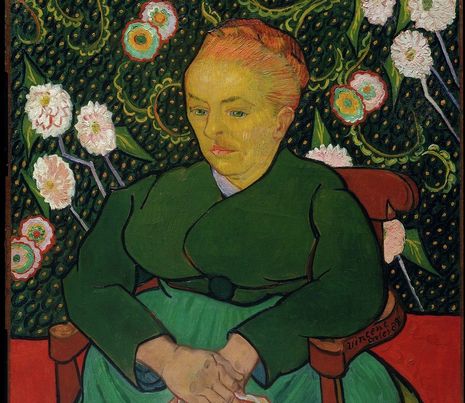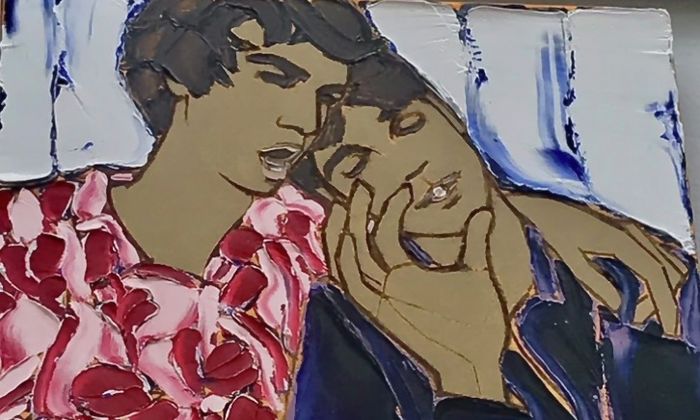The woman behind Van Gogh’s legacy
Blossom Durr, who starred as Johannah van Gogh-Bonger in Four Cut Sunflowers, shines a belated spotlight on the woman who made Vincent van Gogh famous

Deemed one of the world’s greatest celebrations of arts and culture, the Edinburgh Fringe Festival is a ‘must go’ destination for many Cambridge creatives. From musicals to serious dramas, stand-up comedy to one woman shows, Cambridge has taken a host of new and exciting theatre to the Fringe, with this year being no exception. I have joined these creatives, making my Fringe debut playing the protagonist in CUADC’s 2023 production Four Cut Sunflowers: Johannah van Gogh-Bonger, the woman behind Vincent van Gogh. While her name may not ring as loudly as that of her famous brother-in-law’s, it was Johanna who single-handedly ensured Van Gogh’s worldwide fame and success. Her story is one that needs to be told.
“Her story is one that needs to be told”
Marrying Theo van Gogh, Vincent’s younger brother, in 1889, Jo joined her husband in promoting and financially supporting Vincent and his work, experiencing first-hand the cruel hostility Vincent’s art received. While modern audiences marvel at Van Gogh’s vibrant colours and expressive brushstrokes, 19th century viewers saw nothing but “sloppy”, “crude” and “depthless” paintings, unworthy of professional recognition. In the words of critic Julius Meier-Graefe, Van Gogh was, in the eyes of the art world, “not a true artist.”
Jo believed otherwise – she saw Vincent’s work as revolutionary. Following a series of tragic events which claimed the lives of both Vincent and Theo in rapid succession, Jo was left a widow, burdened with over two hundred worthless paintings, a new-born child, crippling financial debt and debilitating grief. However, in a testament to her strength of character, despite being advised to leave the canvases and Vincent’s legacy behind, Jo chose to dedicate her life to the monumental task of preserving and promoting his art, bravely embarking upon a mission to ensure his genius did not fade into obscurity.
“Without Johanna, we’d probably have lost him”
At a time of female subjugation and suppression, Jo’s unwavering determination was an astounding feat. Undeterred by countless rejections, she worked tirelessly, pleading with art critics and curators, stressing the importance of Vincent’s work and its integral role in art history. Her unrelenting persistence ultimately bore fruit with the organisation of the first major Van Gogh exhibition in 1892, an event which sparked the beginning of Vincent’s rise to fame. Yet, determined to reveal the real Vincent hidden behind his reputation as a crazed madman, Jo undertook the colossal task of cataloguing the hundreds of letters sent between Vincent and Theo. These letters, providing invaluable insight into Vincent’s personality, artistic process and inner turmoil, were collated in Jo’s 1914 seminal publication The Letters of Vincent van Gogh. As one audience member remarked post-show in Edinburgh, “without Johanna, we’d probably have lost him.”
Frustratingly (if unsurprisingly), however, the majority of audience members admitted that, before watching the play, they hadn’t ever heard of Jo. They knew of Vincent, but nearly all were unaware of, as one reviewer put it, how “absolutely fundamental the artist’s hitherto unheralded sister-in-law was” in ensuring Vincent’s success. Whilst I was flyering, I was repeatedly asked: “Who?... It’s a play about who?”
These responses are testament to the lack of recognition often given to the great woman behind the great man, to use the famous proverb. Historically excluded from art history, the names of female creatives such as Jo, Lee Krasner, Linda Nochlin and Artemisia Gentileschi deserve to sit alongside those of Van Gogh, Pollock and Monet. Bringing what many described as a “new” but “eye-opening” story to the stage, Four Cut Sunflowers shines a much-needed light onto one of the many unsung women of art history, challenging audiences to recognize the often-overlooked forces that propel art’s journey from easel to the hearts of millions, ultimately hoping to encourage those interested to “want to learn more about the central protagonist.” And so, next time you visit an art gallery and gaze in awe at a Van Gogh painting, think not only of the artist, but of the woman who fought for his art.
 News / Uni Scout and Guide Club affirms trans inclusion 12 December 2025
News / Uni Scout and Guide Club affirms trans inclusion 12 December 2025 News / Cambridge Vet School gets lifeline year to stay accredited28 November 2025
News / Cambridge Vet School gets lifeline year to stay accredited28 November 2025 Science / Did your ex trip on King’s Parade? The science behind the ‘ick’12 December 2025
Science / Did your ex trip on King’s Parade? The science behind the ‘ick’12 December 2025 News / Cambridge study finds students learn better with notes than AI13 December 2025
News / Cambridge study finds students learn better with notes than AI13 December 2025 News / Pembroke to convert listed office building into accom9 December 2025
News / Pembroke to convert listed office building into accom9 December 2025








